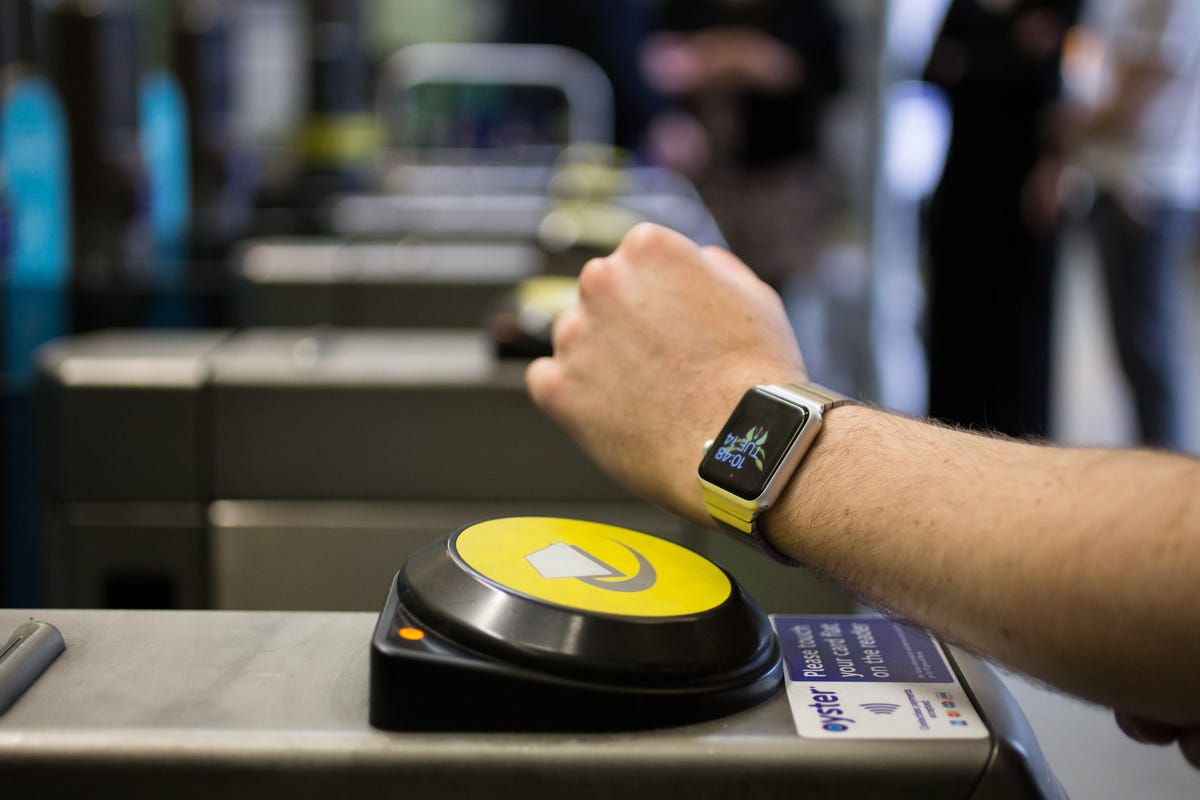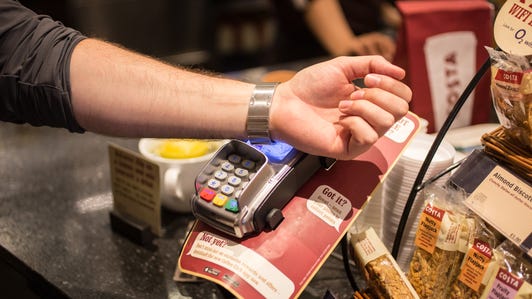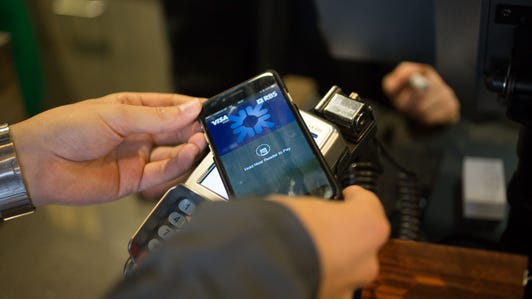
Andrew Hoyle/CNET
Apple Pay is up and running in the UK, but expect a bumpy start as both banks and shops get to grips with this new contactless payment method.
Apple Pay is a new system from iPhone-maker Apple that lets you pay for things by tapping an iPhone or Apple Watch against contactless card readers. To do this, you’ll need to assign one or more credit or debit cards to your iPhone or Apple Watch — a process that Apple promises is secure — and be in a part of the world where Apple Pay has been formally introduced. Having arrived in the US in October of last year, the system is now up and running in the UK.
I’ve been touring some of central London’s supported shops on launch day, and gathering first impressions on using the service in our green and pleasant land, so read on for my findings.
Testing Apple Pay in the UK (pictures)






Easy set-up… if your bank is on board
Assigning a card to Apple Pay is simple, and — dare I say it — fun. From the Passbook and Apple Pay tab in your iPhone’s Settings menu, you can add a card by pointing your iPhone’s camera at your bank card, which automatically finds most of the numbers, saving you from typing everything in. To add a card to the Apple Watch, you have to open your watch’s dedicated app on your iPhone, and add a card from there.
What will immediately hamper Apple Pay for many Brits, however, is that not all banks are currently taking part.
For now, MBNA, Nationwide, NatWest, Royal Bank of Scotland, Santander and Ulster Bank are all aboard, with American Express, Mastercard and Visa credit and debit cards from those banks all supported.
Apple Pay comes to fruition
- Apple Pay lands in the UK, some major banks missing
- Apple Pay is coming to the UK: Here’s where you can use it
- Why Samsung Pay has little advantage over Apple Pay in Europe
- How to get started with Apple Pay
- Can a phone replace your wallet? I went shopping to find out
Most other major UK banks have committed to supporting Apple Pay, but customers will have to wait. HSBC told us that it will be getting involved later this month, along with its online spin-off FirstDirect. The Lloyds Banking Group told us that Lloyds, Halifax and Bank of Scotland will be supported in the autumn. Today Barclays announced it would bring its debit and Barclaycard credit cards to Apple Pay “in future.” The Co-op Bank is “actively looking into” supporting it.
How to use Apple Pay in shops
Apple Pay is supported in plenty of high street chains (for a full list, check out this article), but expect some teething problems as shops and staff become accustomed to the new process.
To use Apple Pay with an iPhone in a shop that accepts it, you hold your phone over a contactless card machine. When prompted, hold your finger on the phone’s home button to have your fingerprint scanned, at which point the payment is processed.
On the Apple Watch, things are a little less automatic. The quickest way I found to pay is by double-tapping the button on the side of the watch, which brings up the Apple Pay screen. Next, hold the watch near the shop’s contactless card machine. One thing to note is that it seems to work best if you hold the Watch face upwards and close to the contactless pad, rather than stamping the Watch face down.
Just a little bit awkward
I got Apple Pay to work in M&S, Starbucks, McDonalds and on the London Underground (it wasn’t working in Costa — I was told support was still a few hours away from being switched on). But while the service is certainly up and running on a technical level, in my experience using Apple Pay in shops can be a little awkward.
I found paying with the Watch, especially, sometimes took a few tries, or swooping my wrist at the contactless reader from a few different angles. Staff in many shops were nonplussed by my attempts to pay via phones and watches, and while all employees I encountered were extremely helpful and attentive, there was a small embarrassment hurdle to overcome.
Apple Pay will likely improve — even if the technology doesn’t change, as shop staff get more accustomed to seeing it, and iPhone or Apple Watch owners get a bit more practised, transactions will certainly become smoother. As a nation with a deeply ingrained fear of fuss and embarrassment, using a more established payment method might seem preferable, at least for now.
Hang on, don’t we have contactless already?
Yes. Unlike some countries, including the US, Brits are already enjoying the benefits of widespread contactless purchases, via contactless bank cards that achieve the same end as Apple Pay — letting you pay for items up to a certain amount without having to sign anything or enter a PIN number.
As such, Apple Pay is a less dramatic addition to the high street experience in the UK, compared to the US. Apple Pay has other merits, however, ones that are less rooted in the physical world. Having assigned a card to your phone, you’ll find that further down the line, Apple Pay could become a very convenient way of paying for things quickly in apps. Dominos, StubHub and Addison Lee are just some of the companies who will let you use Apple Pay through their UK apps.
Apple Pay in the UK: The key points
- Apple Pay has been switched on, but don’t expect staff in shops to know what you’re doing. Be patient, and expect transactions to take a few tries as the nation gets to grips with the new technology.
- Check that your bank is supported before hitting the streets, and be aware that if you want to pay using an Apple Watch, you need to add your debit or credit cards separately via the dedicated Watch app on the iPhone it’s paired to.
- If you’re using an Apple Watch to pay, you can double-click the button on the right of the Watch to quickly bring up your payment card, saving you precious seconds.
- While Apple Pay has loads of potential when it comes to in-app purchasing, in terms of paying for things in shops it has no significant advantage compared to using a contactless bank card.




